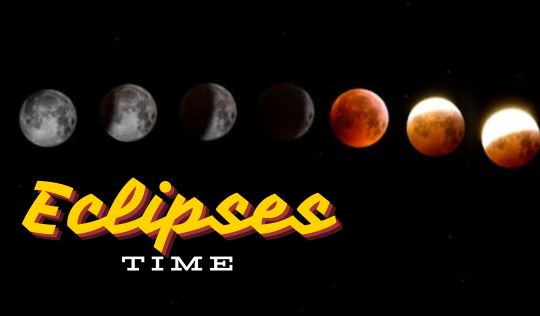
Types of Eclipses
Eclipses are some of the most fascinating celestial events, captivating stargazers and scientists alike. In 2025, two significant eclipses are set to occur: the Partial Lunar Eclipse on September 18 and the Annular Solar Eclipse on October 2. Understanding the differences between these events and where they can be observed enhances our appreciation of these astronomical phenomena.
Types of Eclipses
There are three primary types of eclipses:
1. Solar Eclipse:
Occurs when the Moon passes between the Earth and the Sun, blocking all or part of the Sun’s light.
- Total Solar Eclipse: The Moon completely covers the Sun.
- Partial Solar Eclipse: Only part of the Sun is obscured by the Moon.
- Annular Solar Eclipse: The Moon covers the center of the Sun, leaving a ring-like appearance.
2. Lunar Eclipse:
Happens when the Earth passes between the Sun and the Moon, causing the Earth’s shadow to fall on the Moon.
- Total Lunar Eclipse: The entire Moon enters the Earth’s shadow.
- Partial Lunar Eclipse: Only part of the Moon enters the shadow.
- Penumbral Lunar Eclipse: The Moon passes through the Earth’s outer shadow, resulting in subtle shading.
September 18, 2024: Partial Lunar Eclipse
On September 18, 2024, a Partial Lunar Eclipse will be visible in parts of Africa, Europe, Asia, and Australia. During this event, only a section of the Moon will darken as it moves through the Earth’s shadow. Viewers in areas with clear skies will be treated to a stunning sight as part of the Moon takes on a reddish tint due to the Earth’s atmosphere scattering sunlight.
October 2, 2024: Annular Solar Eclipse
Following the lunar eclipse, an Annular Solar Eclipse will occur on October 2, 2024. This eclipse will be observable across parts of North America, especially in regions like Texas and parts of the southeastern United States. During this event, the Moon will cover the center of the Sun, leaving a bright ring or “ring of fire” visible around the edges. This striking visual occurs because the Moon is at a distance that makes it appear smaller than the Sun.
Key Differences
Visibility:
The partial lunar eclipse will be seen at night and in various regions, while the annular solar eclipse will occur during the day in specific areas.
Appearance:
The partial lunar eclipse results in a darkened section of the Moon, whereas the annular solar eclipse creates a dazzling ring of sunlight.
Safety:
Viewing a lunar eclipse is safe with the naked eye, but observing a solar eclipse requires proper eye protection to avoid damage.
FAQs About Eclipses
1. Can I view a partial lunar eclipse without special equipment?
Yes! A partial lunar eclipse can be viewed with the naked eye. Binoculars or telescopes can enhance the experience but aren’t necessary.
2. Why does the Moon sometimes appear red during a lunar eclipse?
The reddish hue occurs due to Rayleigh scattering, where Earth’s atmosphere scatters sunlight, allowing only the longer red wavelengths to reach the Moon.
3. How often do eclipses occur?
Eclipses happen several times a year, but they can be partial or total and not all are visible from every location.
Conclusion
Eclipses like the partial lunar eclipse and annular solar eclipse offer spectacular glimpses of our celestial mechanics. While the partial lunar eclipse on September 18 can be enjoyed under clear night skies, the annular solar eclipse on October 2 promises a unique daytime spectacle.
Interesting Fact
Did you know that the Moon is slowly drifting away from Earth at a rate of about 1.5 inches (3.8 cm) per year? In contrast, the Sun contains about 99.86% of the total mass of our solar system, making it a true heavyweight among celestial bodies. Enjoy the upcoming eclipses and marvel at the wonders of our universe!







